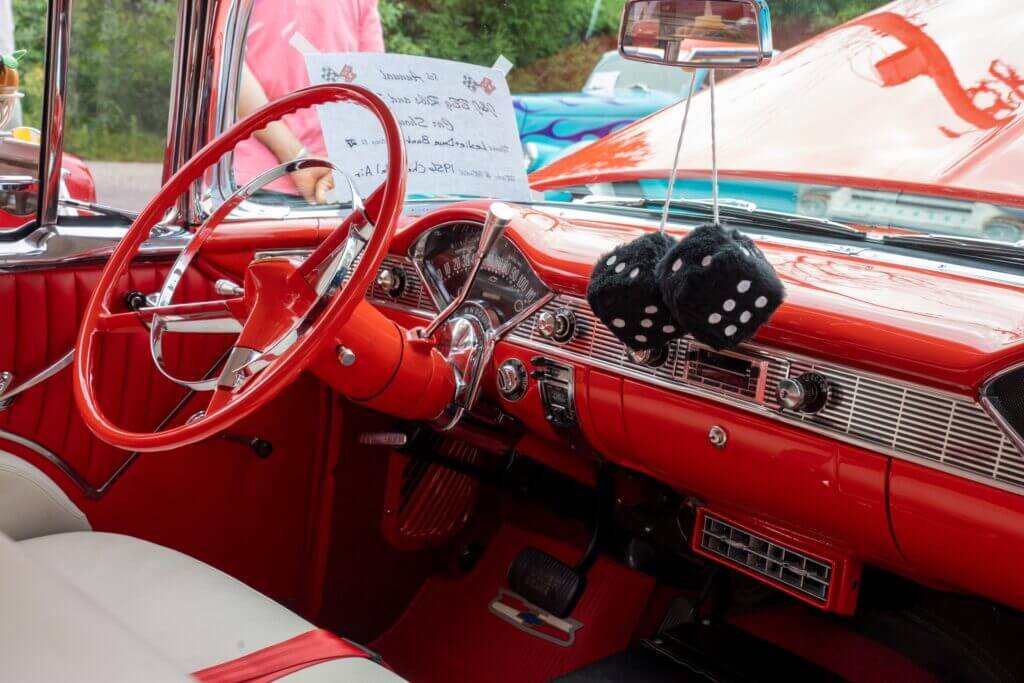Imagine escaping the hustle and bustle of everyday life, embracing the great outdoors, and experiencing the serenity of nature. If you’re new to camping, you may be wondering about the various types available. From the freedom of backpacking to the convenience of car camping, there are endless possibilities to suit your adventurous spirit. In this article, we explore the different types of camping, providing insight into the unique experiences they offer. So, fasten your seatbelt and get ready to embark on a journey filled with excitement, relaxation, and a deep connection with Mother Nature.

1. Backpacking Camping
Backpacking camping is a thrilling way to experience the great outdoors. This type of camping involves carrying all your necessary equipment, food, and supplies in a backpack as you hike to your desired campsite.
1.1 Necessary Equipment
When it comes to backpacking camping, the key is to pack light. Here are some essential items you’ll need to bring:
- Backpack: Choose a backpack that is comfortable to wear and has enough capacity to hold all your gear.
- Tent: Opt for a lightweight and easy-to-set-up tent that provides adequate protection from the elements.
- Sleeping Bag and Sleeping Pad: Invest in a high-quality sleeping bag and sleeping pad to ensure a comfortable night’s sleep.
- Cooking Supplies: A portable stove, lightweight cookware, utensils, and a water filter or purification tablets are essential for cooking meals on the trail.
- Clothing: Pack appropriate clothing layers for both warm and cold weather, including a waterproof jacket, hiking boots, and moisture-wicking socks.
- Navigation Tools: Bring a map, compass, and GPS device to help navigate your way throughout the trip.
- Food and Water: Plan and pack lightweight, non-perishable meals and snacks. Carry enough water or have a plan for sourcing water along the trail.
- First Aid Kit: Always have a basic first aid kit on hand to treat any minor injuries or illnesses that may occur during your hike.
1.2 Planning and Preparation
Before embarking on a backpacking camping trip, thorough planning and preparation are essential. Here are some steps to help you get started:
- Research your destination: Understand the regulations, permits, and trail conditions of the area you plan to visit. Check for any camping restrictions or fire bans.
- Create an itinerary: Plan your route, including daily hiking distances, potential camping spots, and any points of interest along the way.
- Weather conditions: Check the weather forecast for your hiking dates and pack appropriate gear and clothing accordingly.
- Notify someone of your plans: Share your itinerary with a trusted person who can check in on you and alert authorities if needed.
- Practice packing and hiking: Before setting off on your trip, take the time to pack and unpack your backpack to ensure everything fits properly and is well-organized. Additionally, go on shorter practice hikes to get a feel for carrying the weight of your pack.
1.3 Pros and Cons
Backpacking camping offers several advantages and disadvantages to consider:
Pros:
- Immersive experience: Backpacking camping allows you to fully immerse yourself in nature and experience remote and less-accessible areas.
- Physical challenge: It provides a physical challenge and an opportunity to test your endurance and hiking skills.
- Minimal environmental impact: Backpacking minimizes human impact on the environment, as you carry out all your waste and leave no trace behind.
- Cost-effective: This type of camping eliminates the need for expensive campsites or accommodations.
Cons:
- Heavy pack: Carrying all your gear on your back can be strenuous and tiring, especially on long hikes or difficult terrain.
- Limited amenities: Backpacking camping usually means sacrificing some comfort and conveniences, such as showers or comfortable sleeping accommodations.
- Weather-dependent: Outdoor conditions and weather can greatly affect your backpacking experience, and you need to be prepared for unexpected changes.
- Limited storage and food options: The amount of food and supplies you can carry is limited, which means you may have to ration or rely on lightweight, dehydrated meals.

2. Car Camping
Car camping combines the convenience of traveling by vehicle with the joy of camping in the great outdoors. It allows you to bring more gear and supplies while enjoying easy access to your campsite.
2.1 Camping Gear and Supplies
When it comes to car camping, you have the luxury of packing more gear and supplies compared to backpacking camping. Here are some essential items you’ll need:
- Tent: Choose a spacious tent that accommodates the number of people in your group comfortably.
- Sleeping Bags and Air Mattresses: Opt for comfortable sleeping bags and inflatable air mattresses to ensure a good night’s sleep.
- Camp Chairs and Tables: Bring camp chairs and a collapsible table for comfortable seating and dining.
- Lighting: Pack lanterns, flashlights, and headlamps to provide sufficient lighting during nighttime.
- Cooking Equipment: Bring a portable stove, fuel, pots, pans, utensils, and coolers to store food and beverages.
- Campfire Supplies: Don’t forget matches, firewood, and fire starters for a cozy campfire experience.
- Recreation Equipment: Depending on your interests, bring outdoor games, bikes, fishing gear, or any other equipment for recreational activities.
2.2 Choosing the Right Vehicle
When car camping, choosing the right vehicle is crucial. Consider the following factors:
- Size and Interior Space: Ensure that your vehicle has enough space to accommodate all your camping gear comfortably.
- Off-Road Capability: If you plan to venture off the beaten path, opt for a vehicle with good off-road capabilities.
- Fuel Efficiency: Consider the fuel efficiency of the vehicle, especially if you’ll be covering long distances or traveling to remote locations.
- Storage Options: Look for a vehicle that offers ample storage options or invest in rooftop or rear cargo carriers.
- Towing Capacity: If you plan to tow a trailer or bring larger equipment, make sure your vehicle has a sufficient towing capacity.
2.3 Setting Up Camp
Setting up a campsite when car camping is relatively easy compared to backpacking camping. Follow these steps for a smooth setup process:
- Find a suitable campsite: Choose a defined campsite with appropriate facilities, such as restrooms, fire pits, and picnic tables.
- Park your vehicle: Determine the best spot to park your vehicle, considering factors like shade, proximity to amenities, and level ground.
- Set up your tent: Follow the instructions provided with your tent to set it up correctly. Ensure the tent is securely staked to withstand winds or other adverse weather conditions.
- Organize your campsite: Arrange your camp chairs, tables, cooking area, and recreation equipment in an organized and functional manner.
- Create a cozy atmosphere: Set up string lights, lanterns, or other ambient lighting options to create a cozy camping atmosphere.
- Start a campfire: If permitted, gather firewood and start a campfire for warmth, cooking, or simply enjoying the campfire ambiance.
2.4 Pros and Cons
Car camping offers unique advantages and disadvantages:
Pros:
- Comfort and Convenience: Car camping provides a higher level of comfort and convenience compared to other types of camping. You can bring more gear, supplies, and even luxuries to enhance your camping experience.
- Easy Access: You can easily reach your campsite, making it suitable for families or individuals who prefer less physical exertion.
- Variety of Locations: Car camping opens up opportunities to explore different campsites, including campgrounds with facilities and amenities such as showers and electricity.
- Flexibility: With a vehicle at your disposal, you can easily venture out to nearby attractions, hiking trails, or explore the surrounding areas during your camping trip.
Cons:
- Less Wilderness Experience: Car camping often takes place in designated campgrounds or areas that may lack the remoteness and seclusion of backpacking or tent camping.
- Crowded Campgrounds: Popular or well-equipped campgrounds can become crowded, especially during peak seasons or holidays.
- Limited Accessibility: Certain areas may not be accessible by vehicle, restricting your camping options to designated campgrounds only.
- Higher Cost: Car camping can be more expensive due to the need for vehicle expenses, campground fees, and the additional gear and supplies required.
Stay tuned for the continuation of the comprehensive article.



